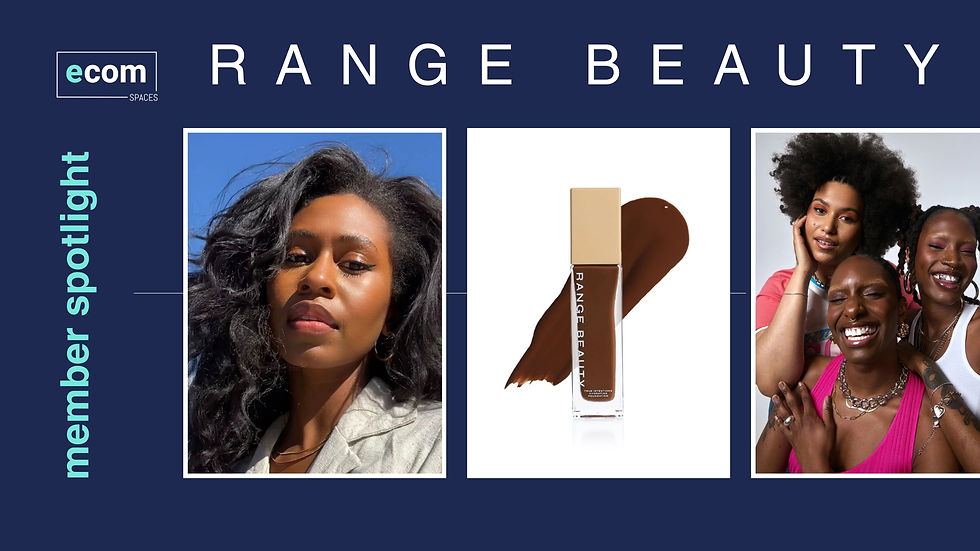The Art of Storytelling: How to Connect with Your Customers Through Brand Messaging
- Jasmine Mitchell

- Apr 16
- 3 min read
Updated: Jun 16
If your brand feels like it’s getting lost in the noise, storytelling might be the missing piece. E-commerce founders often focus on perfecting product details, but overlook the narrative that actually makes people care.
Storytelling is more than a buzzword. It’s the difference between being just another brand and becoming the brand your customers feel emotionally connected to.
Let’s talk about how to use storytelling to make your messaging stick and convert.
Why Storytelling Creates an Emotional Connection
People don’t just buy products, they buy meaning. A great brand story helps your customer see themselves in your journey. It builds trust, relatability, and memorability. In fact:
Stories activate more parts of the brain than facts alone.
Emotional connection leads to stronger brand loyalty.
Storytelling increases perceived value. People are willing to pay more for products with purpose.
If your website, emails, or product descriptions just list features without any feeling, it’s time to go deeper.
What Makes a Strong Brand Story?
You don’t need a dramatic backstory or a million-dollar founder origin. You just need to tell the truth with intention.
Key elements of a great brand story:
Your Mission: Why do you exist? What problem are you solving?
Your Values: What do you stand for?
Your Transformation: How did you (or your customers) get from “before” to “after”?
Your Customer’s Role: How do they fit into your story?
Try this structure:
“We started [Brand Name] because we were tired of [pain point]. We believe [core value], and we exist to help people [transformation]. Our community is full of [customer archetype], and we’re proud to support them every step of the way.”
This works well on your About Page, in email sequences, or as a pinned post on Instagram.
Feeling unsure if your brand storytelling truly resonates?
Take our quick, 2-minute quiz to find out exactly what your brand needs right now to turn visitors into loyal customers.
How to Use Storytelling Across Your Marketing
Storytelling doesn’t just belong on your About Page. It should show up everywhere your brand shows up.
On Your Product Pages
Talk about how the product came to life, who it was made for, and what problem it solves.
Example: “This moisturizer was born after years of trying to find a clean formula that actually worked for melanin-rich skin. We created it because we were tired of products that felt like an afterthought.”
In Your Emails
Instead of starting with a sale, start with a story. Share a customer moment, a behind-the-scenes anecdote, or the “why” behind a new launch.
On Instagram
Use storytelling to humanize your team, show real customer wins, or reflect on the ups and downs of entrepreneurship.
Real-World Brands Doing This Well
Partake Foods shares their founder's story as a mom who wanted allergen-free snacks her daughter could safely enjoy and the hustle it took to get on shelves.
Blueland takes us inside their eco-friendly mission, sharing their fight to reduce plastic waste and showing progress with each new launch.
The Lip Bar unapologetically tells the story of redefining beauty standards and building a brand made for people of color, by people of color.
Each of these brands doesn’t just sell, they share, and that’s what keeps people coming back.
Ready to elevate your brand storytelling?
Every e-commerce founder is at a different stage, and your next step depends on where you are right now. Our short quiz will help you discover exactly which ecomspaces membership is the best fit to enhance your brand messaging and build deeper connections with your customers.
Click below to take our quiz and find your perfect membership.



Loved how this breaks down brand storytelling into something practical. I’ve seen firsthand how clear, authentic messaging builds trust—and it’s the same with SEO. People don’t just buy rankings, they buy into stories. That’s one of the reasons I work so closely with founders during seo coaching: we don’t just optimize content—we align the message with real customer intent. When storytelling and SEO strategy are built together, visibility becomes conversion. The stronger your brand voice, the better your organic growth potential. This piece nails the emotional side that too many digital marketers skip.